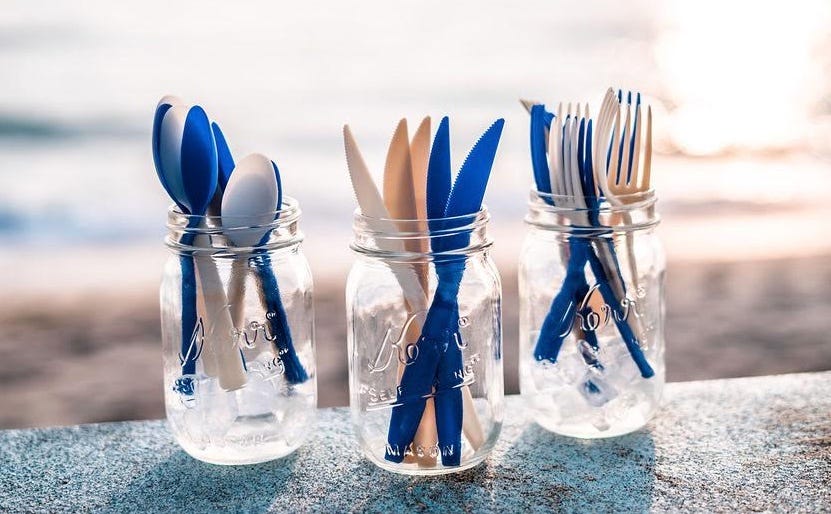ZEUS: Catching up on AirCarbon with Newlight's Mark Herrema
The Huntington Beach, Calif. manufacturer makes luxury products and cutlery from thin air, pulling carbon from the atmosphere

(David Callaway is founder and Editor-in-Chief of Callaway Climate Insights. He is the former president of the World Editors Forum, Editor-in-Chief of USA Today and MarketWatch, and CEO of TheStreet Inc.)
SAN FRANCISCO (Callaway Climate Insights) — It takes the mind of a science geek to calculate the cost of cow gas, but that’s just how Mark Herrema and his partner Kenton Kimmel came up with the idea for AirCarbon 17 years ago.
Sitting at a kitchen table the summer between their junior and senior year in college (Princeton and Northwestern, respectively), the two self-professed science nerds read through an article on methane gas emissions from cows. Herrema picked up a calculator and quickly figured out that the average cow emitted $20 worth of methane per year.
“It was our lightbulb moment,” Herrema said. “No one was treating it as a resource, at least at the time. So we started thinking about how we could convert greenhouse gas emissions into high-value materials.”
More than a decade-and-a-half later, Newlight Technologies is operating at scale from a gleaming new plant in Huntington Beach, Calif., with two lines of products — cutlery and luxury purses and glasses — made from carbon snatched from the air. Herrema, 38, and Kimmel, 38, just completed a $45 million Series F round, and have raised more than $100 million to bring their product, AirCarbon, to scale.
AirCarbon is made from microorganisms in the sea, which use greenhouse gas emissions and air to make a product called PHB. Over 10 years of experimenting, while working as valets and fitness instructors at the nearby Monarch Beach Resort, Herrema and Kimmel figured out a way to melt the PHB into a material which can be used to replace plastic and leather.
Their first products are designed to be hip and cool, but more importantly, to address the twin problems of plastics pollutions in the ocean and climate change. Their website, which may be the most best corporate website I’ve ever seen, divides the products into two brands: Restore, which makes ocean-degradable straws and cutlery, above; and Covalent, which is carbon-negative eyeware and leather replacements for items such as handbags.
That’s carbon negative, not carbon neutral. The production of Covalent products takes carbon that was heading from the atmosphere out of it.
“We effectively had radio silence on the company for about 10 years of its life until we solved for price, performance and sustainability,” Herrema said. “We had to figure out where AirCarbon had the most value. We thought we could make a difference in the food space, and help de-carbonize the fashion space.”
Herrema said the focus now is on increasing scale of both the amount of carbon taken from the air and of course, of the products. The company is looking into the furniture space, and the automotive space, he said. Two new plants are in the works.
Newlight has about 70 full-time employees. It doesn’t disclose revenue or profit but Herrema said that product sales are starting to “ramp up.” He said the manufacturing practices have changed to adapt to Covid-19, but that the plant has been able to operate 24/7 since the pandemic began.
At a time when the global climate change discussion is often about reducing waste, it’s important to remember that to prevent the worst scenarios from climate change, we actually have to take greenhouse gas emissions out of the atmosphere, not just stop pumping them into it.
Science geeks and entrepreneurs like Herrema and Kimmel are showing there is also business value to be had from pollution solutions.





Love what they're doing, but "pulling carbon from thin air" is incredibly misleading. Can they really draw a line connecting methane from the atmosphere to their reactor feedstock?